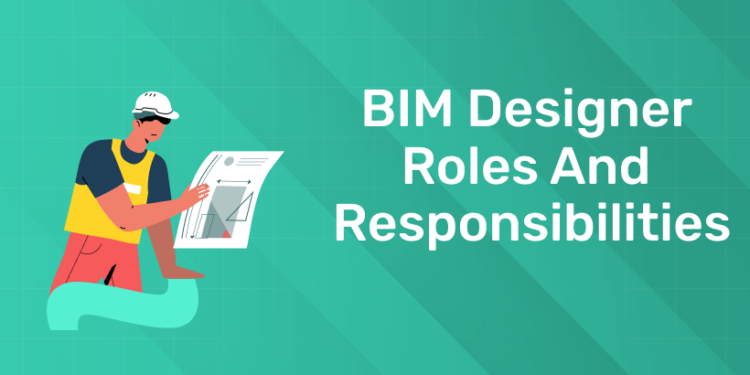Table of Contents
A BIM Designer is a professional responsible for creating and managing digital models of a building or infrastructure project. Using Building Information Modeling technology, these designers convert ideas into detailed 3D representations. Here’s what this role involves:
- Digital Modeling: Translating traditional blueprints into detailed three-dimensional models.
- Interdisciplinary Integration: Coordinating with architects, engineers, and other professionals.
- Data Management: Ensuring that every aspect of the design is updated, consistent, and accessible.
In essence, a BIM Designer bridges the gap between creative design and technical execution. Their work forms the backbone of modern construction projects by streamlining communication and reducing errors.
BIM Designer: Core Responsibilities
BIM Designers handle a range of responsibilities throughout a project’s lifecycle. Their tasks are both technical and collaborative. Below are some of the core duties they perform:
3.1. Developing 3D Models
- Creation of Detailed Models: Drafting comprehensive 3D models that accurately represent building components.
- Model Accuracy: Constantly verifying that models reflect real-world dimensions and materials.
3.2. Integrating Design Elements
- Interdisciplinary Input: Incorporating input from various experts such as architects and structural engineers.
- Data Integration: Merging design plans with engineering calculations to ensure coherence.
3.3. Coordinating with Stakeholders
- Regular Meetings: Participating in regular project meetings to discuss updates and challenges.
- Feedback Implementation: Adjusting models based on stakeholder feedback.
3.4. Conflict Detection and Resolution
- Clash Detection: Identifying areas where building systems might conflict (for example, where ductwork and electrical systems intersect).
- Problem Solving: Proposing adjustments to eliminate clashes and streamline project implementation.
3.5. Updating and Maintaining the Model
- Version Control: Keeping track of model revisions and updates throughout the project lifecycle.
- Documentation: Preparing accurate documentation that aligns with the current state of the model.
3.6. Ensuring Compliance with Standards
- Regulatory Adherence: Confirming that all designs meet local building codes and industry standards.
- Quality Assurance: Regularly reviewing models to ensure they adhere to quality benchmarks.
Each of these responsibilities is critical for the smooth execution of construction projects. A well-managed BIM model can save time, reduce costs, and improve overall project quality.
BIM Designer: Collaboration with Architects, Engineers, and Contractors
BIM Designers rarely work in isolation. Their role involves close collaboration with various professionals. This teamwork is vital to ensure that all aspects of the project are harmonised. Below is an overview of how these collaborations work:
4.1. Working with Architects
- Design Interpretation: Translating architectural sketches into digital models.
- Detail Enhancement: Adding depth and detail to architectural designs.
- Feedback Loop: Refining models based on architects’ critiques and design changes.
4.2. Coordinating with Engineers
- Structural Analysis: Integrating engineering data, such as load calculations and material specifications.
- Systems Integration: Ensuring that mechanical, electrical, and plumbing (MEP) systems fit within the model.
- Simulation and Testing: Running simulations to validate the design under various conditions.
4.3. Engaging with Contractors
- Constructability Reviews: Helping contractors understand the digital model for on-site construction.
- Conflict Resolution: Adjusting designs to meet practical on-site requirements.
- Resource Scheduling: Assisting in the planning and sequencing of construction activities.
4.4. Communication Strategies
- Regular Coordination Meetings: Weekly or biweekly sessions to update all stakeholders.
- Centralised Data Repositories: Using shared platforms to maintain an updated model.
- Visual Presentations: Using 3D visualizations to explain design concepts during meetings.
The collaboration among these groups not only streamlines the workflow but also fosters an environment where ideas and technical solutions can evolve together.
Master BIM and Elevate Your Career – Enroll Today!
Stay ahead in the construction and design industry with our comprehensive BIM Course! Learn Building Information Modeling (BIM) from experts, gain hands-on experience with top software, and boost your career prospects. Join now and become a certified BIM professional!
Know MoreBIM Designer: Software and Tools
The role of a BIM Designer relies heavily on specialized software. These tools help create accurate models, manage data, and facilitate collaboration. Below is a table summarising some popular software tools and their primary functions:
| Software Tool | Primary Function | Usage |
|---|---|---|
| Autodesk Revit | Comprehensive BIM modeling | Creation, updating, and management of 3D models |
| AutoCAD | 2D drafting and basic 3D modeling | Drafting blueprints and technical drawings |
| Navisworks | Clash detection and project review | Detecting conflicts and coordinating multidisciplinary models |
| SketchUp | Quick 3D modeling and visualization | Initial design phases and client presentations |
| ArchiCAD | BIM modeling for architectural design | Detailed design and model documentation |
| Bentley Systems | Infrastructure design and management | Managing large-scale projects and complex models |
Each tool has its own strengths, and a proficient BIM Designer may use several of these in combination to achieve the best results.
BIM Designer: Key Skills
To excel as a BIM Designer, certain technical and interpersonal skills are necessary. Below is a list of essential skills:
- Technical Proficiency:
- Mastery over BIM software (e.g., Autodesk Revit, Navisworks).
- Understanding of architectural and engineering principles.
- Attention to Detail:
- Accuracy in drafting and data input.
- Consistency in maintaining model integrity.
- Problem-Solving Skills:
- Ability to detect clashes and propose effective solutions.
- Analytical thinking to integrate complex design elements.
- Communication:
- Clear articulation of ideas in meetings.
- Writing skills for proper documentation and reporting.
- Collaboration:
- Teamwork with multidisciplinary professionals.
- Flexibility in accommodating feedback and changes.
- Time Management:
- Ability to meet project deadlines.
- Efficient handling of multiple tasks simultaneously.
Each of these skills not only supports the technical aspects of the role but also enhances the collaborative nature of the work.
BIM Designer: Challenges Faced
Despite its many advantages, the role of a BIM Designer is not without challenges. Here are some common obstacles:
-
Data Management Complexities:
- Keeping models updated with real-time changes can be demanding.
- Coordinating large volumes of data from various sources often requires meticulous attention.
-
Software Compatibility:
- Different software systems may not always integrate smoothly.
- Frequent updates to software can lead to compatibility issues.
-
Coordination Among Teams:
- Synchronising changes across diverse teams can be time-consuming.
- Miscommunication can lead to discrepancies in the final model.
-
Training and Skill Development:
- Staying current with technological advancements is essential.
- Continuous learning is necessary to manage new tools and methods.
-
Regulatory and Quality Standards:
- Adhering to strict industry standards requires thorough knowledge.
- Ensuring compliance with local and international codes adds another layer of responsibility.
While these challenges can be significant, a well-prepared BIM Designer will have strategies in place to address them and continue to deliver high-quality work.
BIM Designer: Career Growth and Opportunities
The field of BIM design offers considerable potential for professional growth. As projects become more complex and integrated, the demand for skilled BIM Designers continues to rise. Here are some pathways and growth opportunities:
8.1. Advanced Roles
- BIM Coordinator:
- Focuses on managing BIM data across different project phases.
- Oversees coordination between various teams to ensure model accuracy.
- BIM Manager:
- Takes on a leadership role, managing a team of BIM Designers.
- Responsible for strategic planning and quality control of BIM processes.
8.2. Cross-Disciplinary Opportunities
- Project Manager:
- Uses BIM expertise to oversee entire construction projects.
- Ensures that design, engineering, and construction phases are well integrated.
- Consultant Roles:
- Provides expert advice on the adoption and integration of BIM technology.
- Works with multiple clients on improving their project workflows.
8.3. Continuous Learning and Certification
- Professional Development:
- Attending workshops, webinars, and certification courses.
- Keeping updated with industry best practices and new software updates.
- Skill Diversification:
- Gaining expertise in additional areas such as project management or sustainability in design.
- Enhancing career prospects by learning complementary skills.
8.4. Market Demand and Future Trends
- Growing Industry Adoption:
- As more companies adopt BIM practices, opportunities for specialists are increasing.
- Global trends towards digitalisation in construction indicate sustained demand.
- Technology Integration:
- Future projects will likely integrate virtual reality (VR) and augmented reality (AR) with BIM.
- This integration opens up roles in tech-driven construction planning and design.
In summary, the career path for a BIM Designer is dynamic, with a clear trajectory toward higher responsibility and greater impact on projects.
Conclusion
The role of a BIM Designer is integral to modern construction and design projects. They transform traditional design documents into dynamic 3D models that foster collaboration among architects, engineers, and contractors. Their work ensures that projects are both accurate and efficient, with digital models that evolve with the project’s needs.
In this article, we explored:
- The definition and significance of a BIM Designer.
- Core responsibilities such as model development, conflict detection, and data management.
- Collaboration with different professionals to ensure seamless project execution.
- Software tools and skills needed to create, manage, and update BIM models.
- Challenges and career opportunities that shape the professional journey in BIM design.
Understanding these aspects not only helps in appreciating the role but also paves the way for individuals looking to pursue a career in this innovative field.
Master BIM and Elevate Your Career – Enroll Today!
Stay ahead in the construction and design industry with our comprehensive BIM Course! Learn Building Information Modeling (BIM) from experts, gain hands-on experience with top software, and boost your career prospects. Join now and become a certified BIM professional!
Know MoreMaster BIM and Elevate Your Career – Enroll Today!
Stay ahead in the construction and design industry with our comprehensive BIM Course! Learn Building Information Modeling (BIM) from experts, gain hands-on experience with top software, and boost your career prospects. Join now and become a certified BIM professional!
Know MoreFrequently Asked Questions
Which software tools are essential for a BIM Designer?
A: Commonly used software includes Autodesk Revit, AutoCAD, Navisworks, SketchUp, and ArchiCAD. These tools aid in model creation, clash detection, and documentation.
What skills are most important for a BIM Designer?
Key skills include technical proficiency in BIM software, attention to detail, effective communication, problem-solving, and the ability to work well within interdisciplinary teams.
How can I advance my career in BIM design?
Career growth can be achieved through continuous learning, obtaining certifications, gaining experience in advanced roles (such as BIM Coordinator or BIM Manager), and exploring cross-disciplinary opportunities in project management or consultancy.











